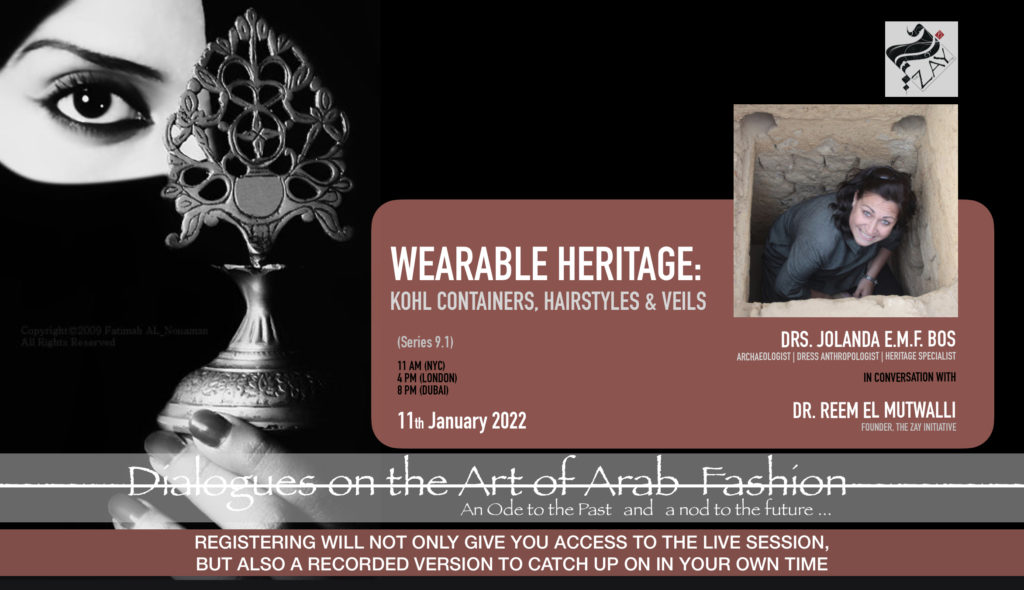




Event Description: Join Dr. Reem El Mutwalli & Drs Joland Bos for our first webinar of 2022 on Tuesday 11th January for their discussion on Wearable Heritage. Since ancient times, applying kohl to the eyes has been an important tradition in the West Asian and North African region. This probably started as early as the Bronze Age and still exists today. In the present as well as in the past, the material was pulverized and stored in containers. Jolanda Bos recently published a book on the history of these bottles and flasks. She has been collecting different kohl containers for over twenty years and tells the story about the different values of these objects and the meaning that kohl has had throughout history. ‘Paint it, Black’ is the first book its kind. It is richly illustrated with hundreds of photographs of ancient and more recently produced objects. In her research, Jolanda didn't just focus on the different shapes of kohl containers throughout the ages, but also on the question why the objects have their specific shape and what these shapes symbolize in different cultural settings. In many cultures the kohl container, often called makhallas in Arabic, is a utensil that is the spontaneous product of home industries and was often fashioned with materials that were readily available. Therefore, a kohl flask can be (partly) made from a reused object (such as an empty medicine bottle for example) that has been decorated with or has been incorporated into another object. Often a makhallas consists of several different materials. Beads, shells, leather, textiles or buttons are used around the kohl holder as beautiful and meaningful decoration. In addition, there are also cultures in which kohl containers are not made in a tradition of home industry. Here, the containers are produced but by highly qualified craftsmen, such as jewelers, glass manufacturers, or wood carvers. The different types of containers reveal the fact that they were once very personal objects. They were personal items that were appreciated for various reasons. Sometimes the flasks were worn as jewelry, or they were used as a house amulet that was hung on walls or in tents, or that the owner used the objects in (wedding) ceremonies. Therefore, these objects may carry very personal memories, while being objects of daily use. This degree of intimacy is an important value of the kohl containers. ‘Paint it, Black. A Biography of Kohl Containers.’ can be purchased via the publisher’s website: https://www.blikvelduitgevers.nl/product-page/paint-it-black
Date: 11th January 2022
Time: 11 am (NYC), 4 pm (London), 8 pm (Dubai)
Tickets: Donation
Students: If you are a student or member of academia please register here to receive your complimentary registration links.
Registering will not only give you access to the live session but also a recorded version to catch up on in your own time.
This event has ended, if you like to watch the recorded version, please become a Friend of The Zay Zay: (Arabic: costume, Pl. azyaā’), a set of clothes in a style typical of a particular country or historical period., and you will get access to over 40 past webinars with world renewed experts on Arab dress.